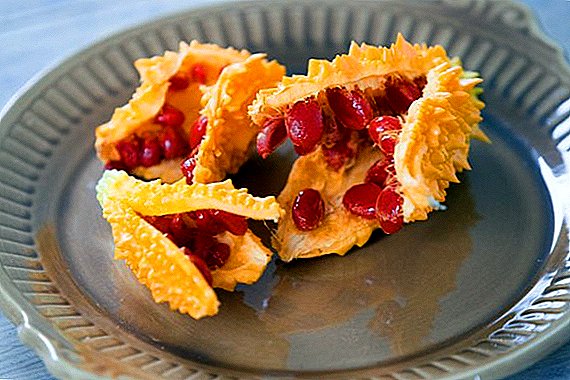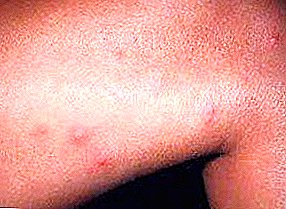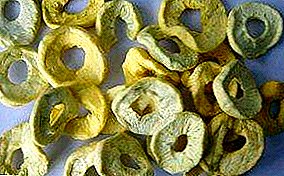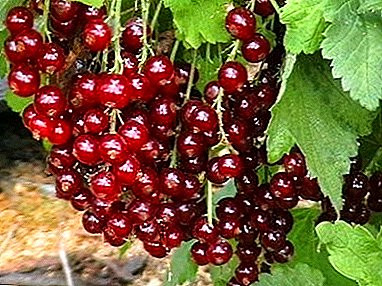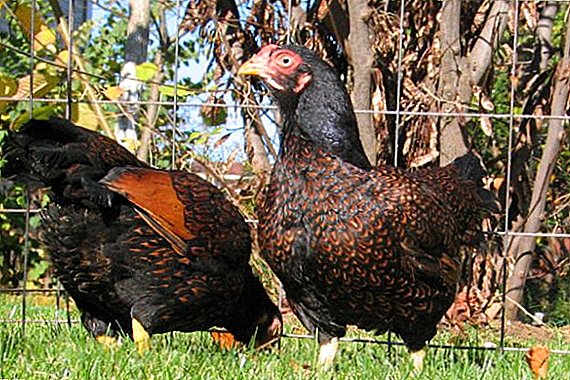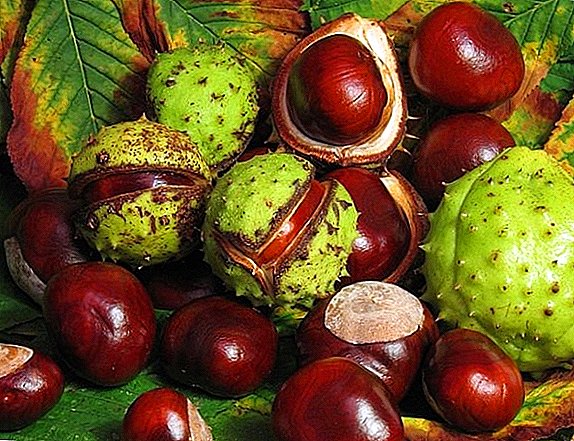 The term chestnut has several meanings. Firstly, trees are so called, often found in parks or on the streets. This horse chestnut is a tree from the Sapindov family. It has many types and belongs to inedible chestnuts, but is widely used in traditional medicine. Secondly, edible chestnuts are so called. They belong to the Beech family and unite 10 species. Thirdly, the so-called Australian chestnut. He belongs to the family of legumes.
The term chestnut has several meanings. Firstly, trees are so called, often found in parks or on the streets. This horse chestnut is a tree from the Sapindov family. It has many types and belongs to inedible chestnuts, but is widely used in traditional medicine. Secondly, edible chestnuts are so called. They belong to the Beech family and unite 10 species. Thirdly, the so-called Australian chestnut. He belongs to the family of legumes.
Consider the types of chestnuts, their types and varieties.
Horse chestnut (Aésculus)
According to one of the versions, the name of a horse chestnut is derived from fruits that resembled the color of a bay horse in color and brilliance.
Under natural conditions, horse chestnut is found in southern Europe, in northern India, in East Asia, in North America. He prefers a temperate climate and fresh, loose, fertile soil. There are 28 types of horse chestnut, 13 of which are common in Russia and 15 in Europe, America, Japan and China. The fruiting period of the plant begins at the age of 15 years.
 The tree height up to 25 m refers to deciduous. The leaves are large, consist of 5-7 leaves with long petioles. The flowers are bell-shaped, up to 2 cm in diameter, collected in large inflorescences in the form of vertical pyramidal brushes. The chestnut is very beautiful during flowering in May and June.
The tree height up to 25 m refers to deciduous. The leaves are large, consist of 5-7 leaves with long petioles. The flowers are bell-shaped, up to 2 cm in diameter, collected in large inflorescences in the form of vertical pyramidal brushes. The chestnut is very beautiful during flowering in May and June.
After pollination appears the fruit, surrounded by a needle box. After ripening the fruit box cracks. The tree grows slowly and suffers from a chestnut mining moth. All types of chestnuts are decorative and belong to good honey plants. Chestnut honey is liquid, transparent, colorless, quickly crystallizes and slightly bitter.
Chestnut seeds are nutritionally similar to grains, but are bitter in taste, therefore they are reluctant to be eaten by livestock.
Wood, because of its softness and low biological stability, has no commercial value.
All components of the plant (except the barbed seed box) are used in the pharmaceutical industry. In folk medicine, it is used for varicose veins in the legs and for hemorrhoids, for rheumatic and arthritic pains.
Did you know? Horse chestnut was used earlier in the production of gunpowder as a raw material for charcoal, as well as an ingredient for the manufacture of binding glue.
 The most common types of horse chestnut include:
The most common types of horse chestnut include:- Horse chestnut Californian (Aesculus californica) is a tree up to 10 m high, having leaves with 5 stipules. Flowers white and pink, collected in inflorescences up to 20 cm, have a pleasant aroma.
- Horse chestnut yellow (Aesculus flava) - grows in North America in height to 30 m. Leaves of dark green color consist of 5-7 leaf plates. The tree has a gray or brown bark. It blooms 2-3 weeks later than horse chestnut yellow flowers. Treats the most cold-resistant types.
- Horse chestnut naked (Aesculus glabra) - a tree growing in the eastern regions of the USA, has a height of up to 25 m and a trunk diameter of up to 0.6 m. It is characterized by decorativeness of the crown, foliage and fruits.
- Indian horse chestnut (Aesculus indica) - a tree growing in Northern India, up to 20 m. It blooms with white flowers with yellow and red spots. Leaves with wedge-shaped stipules. Thorny fruits.
- Horse chestnut small-color (Aesculus parviflora) - grows in the southeastern states of the United States and forms a shrub up to 5 m tall. The leaf consists of 5-7 leaflets, the bottom is felt grayish. Flowers are white with pinkish stamens.
- Horse chestnut red (Aesculus pavia) - grows in North America in height to 12 m. The leaves consist of 5 leaves, slightly fluffy below. Flowers are bright red, the fruit is not prickly.
- Japanese horse chestnut (Aesculus turbinata) - grows in Japan, looks like an ordinary chestnut, but with longer leaf plates. The height of the tree reaches 30 m, the flowers are yellowish-white color, the fruit is slightly elongated.
- Horse chestnut meat-redst (Aesculus × carnea) - grows in Europe, North America, Crimea. Tree up to 25 m with red flowers and dark green leaves. Fruits are round-shaped, slightly prickly.

Did you know? In Geneva, there is a tradition to announce spring when the first leaf appears on a chestnut under the window of the government. In 2006, spring was announced twice - in March and October, since the tree suddenly bloomed in the fall.
Edible chestnut species (Castánea)
The Beech family chestnut is a powerful tree that prefers a warm temperate climate and grows in the Mediterranean, on the Atlantic coast of the USA, in East Asia. It belongs to deciduous trees up to 50 m high or shrubs.
 The leaves are simple, oblong-oval, short-petaled, 6–25 cm long. Flowers are collected in spicate inflorescences 5–15 cm long. Fruits are spherical with prickles, contain 1–3 chestnuts when cracked.
The leaves are simple, oblong-oval, short-petaled, 6–25 cm long. Flowers are collected in spicate inflorescences 5–15 cm long. Fruits are spherical with prickles, contain 1–3 chestnuts when cracked.
Important! Chestnut wood Castánea is very similar to oak wood, so it is used to make barrels that store wine and brandy. It is also widely used in furniture production.
Chestnut fruits contain carbohydrates and proteins, so they are widely used in the food industry.
Chestnut gorodchaty (Castanea crenata)
In nature, it is common in Japan, China, Korea, and is found in Western Europe and North America. The tree is up to 15 m high and up to 1.5 m in diameter. Prefers moist soil and air, but can withstand frosts up to 25 degrees of frost. Grows quickly and bears fruit for 2-4 years. The tree has long leaves of 8-16 cm long and 3-3.5 cm wide, on petioles 10-12 mm. From above they are smooth and shiny, and from below felt. Fruits are combined on 3 pieces, their diameter is 2-3 cm. This species has up to 100 cultivated varieties that belong to the largest fruit among chestnuts. Fruits reach 6 cm in diameter and up to 80 g in weight. 
Chestnut American (Castanea dentata)
Another name - chestnut. In nature, common in North America. It grows in coniferous-deciduous forests on the mountain slopes. The tree up to 35 m high and in the trunk diameter up to 1.5 m belongs to hardy plants, as it withstands temperatures down to -27 degrees and high air pollution. Growth rate of 0.5-1 m per year.
The tree has long leaves (12-24 cm), 4.5-5.5 cm wide. Their wedge-shaped form with large teeth along the edge, dull greenish-yellow color. Flowers are collected in long ears of up to 20 cm, at the base of which are female flowers. Fruits are combined in 2-3 pieces. 1-2.5 cm in diameter. At present, it is not too widespread due to defeat in the 80-90s of the XIX century. fungus Endonia parasitica, imported from China. By the age of 80, the tree stops growing and requires a log house.  Both wood and chestnut fruits are widely used by humans. Wood is used mainly for tannins. Cultivars of this species are distinguished by the sweetness of the fruit. They contain 6% of water in dry condition, 10% of protein, 8% of fat, 73% of carbohydrates, 2% of ash and, in taste, are superior to the fruits of chestnut.
Both wood and chestnut fruits are widely used by humans. Wood is used mainly for tannins. Cultivars of this species are distinguished by the sweetness of the fruit. They contain 6% of water in dry condition, 10% of protein, 8% of fat, 73% of carbohydrates, 2% of ash and, in taste, are superior to the fruits of chestnut.
Henry Chestnut (Castanea henryi)
 In nature, distributed in central and western regions of China. The height of the tree is up to 25-30 m. The leaves are egg-shaped, 9-22 cm long, 5-6 cm wide, placed on petioles up to 1.5 cm long and have a yellowish-green color. The fruit is surrounded by a ply in diameter up to 2 cm with lowered needles and contains one chestnut each.
In nature, distributed in central and western regions of China. The height of the tree is up to 25-30 m. The leaves are egg-shaped, 9-22 cm long, 5-6 cm wide, placed on petioles up to 1.5 cm long and have a yellowish-green color. The fruit is surrounded by a ply in diameter up to 2 cm with lowered needles and contains one chestnut each.
Chinese Chestnut (Castanea mollissima)
This type is also called chestnut softest. In nature, common in China, Korea and Vietnam. Often found in the mountains of North America forming small forests. Fruiting begins with 5-8 years of age.
 The tree reaches a height of 20 m and has a wide crown. The leaves are elliptical, 8–22 cm long, 5–7 cm wide, placed on petioles 7–8 mm long and have a dark green color from above and brighter from below. The leaves are silky-drooping. The fruit is surrounded by a ply with a diameter of 5-6 cm with light soft spines. The number of fruits is basically 2-3, up to 3 cm in diameter. Both wood and fruits are widely used, which are superior to other types of chestnuts in taste characteristics.
The tree reaches a height of 20 m and has a wide crown. The leaves are elliptical, 8–22 cm long, 5–7 cm wide, placed on petioles 7–8 mm long and have a dark green color from above and brighter from below. The leaves are silky-drooping. The fruit is surrounded by a ply with a diameter of 5-6 cm with light soft spines. The number of fruits is basically 2-3, up to 3 cm in diameter. Both wood and fruits are widely used, which are superior to other types of chestnuts in taste characteristics.
The cultivation of the softest chestnut caused the death of the chestnut toothed. A fungus infecting a chestnut was introduced with it, and the plant itself has a strong immunity against this fungus.
Short chestnut (Castanea pumila)
In nature, it is common in North America. In Western Europe, refers to the decorative forms since 1699. The tree up to 15 m high grows on dry sandy soils and belongs to cold-resistant. The leaves have an oblong-elliptical shape, a yellow-green color on top and a white-cell structure below, placed on petioles up to 1 cm long. The fruit is surrounded by an egg-shaped pluss with a diameter of up to 4 cm with numerous spines. Fruits with a diameter of 1 cm, usually in the amount of 1-2 pieces. appear as a result of cracking plyus after ripening. 
Seed chestnut (Castanea sativa)
In nature, it is distributed in southeastern Europe and Asia Minor. It prefers a humid and warm subtropical climate. It grows on the slopes of the mountains, forming forests, mixed with fir, beech and hornbeam. The tree grows quickly, propagates by seeds and shoots, begins to bear fruit from the age of 20. A distinctive feature of this type is a powerful root system that holds the crown well. Life expectancy is 100-150 years, but trees of 1000 years of age are also known.
A tree up to 35 m tall and up to 1 m in diameter of the trunk has dark brown cracked bark. The leaves are oblong, 10-28 cm long, 5-9 cm wide, felt to the bottom, and smooth on top and have a serrated edge. Flowers are collected in spike-shaped inflorescences with male and female flowers. Flowering occurs in June-July, and pollination is carried out by bees and other insects or wind. Fruits weighing 17-20 g are surrounded by prickly pussy. Ripening and disclosure of fruits occurs in October-November. The average yield per adult tree is 100-200 kg.  Chestnuts are made into flour, eaten raw, baked, boiled, dried, smoked, widely used in cooking. Chestnut wood is very valuable. It is strong, light, beautiful and durable. All components of this tree contain tannins, and therefore serve as raw materials for the production of tannins. Due to the content in the leaves of chestnut seed vitamin K and tannins they are used in traditional medicine for internal bleeding. Bark and plyus used to be used as a dye.
Chestnuts are made into flour, eaten raw, baked, boiled, dried, smoked, widely used in cooking. Chestnut wood is very valuable. It is strong, light, beautiful and durable. All components of this tree contain tannins, and therefore serve as raw materials for the production of tannins. Due to the content in the leaves of chestnut seed vitamin K and tannins they are used in traditional medicine for internal bleeding. Bark and plyus used to be used as a dye.
Chestnut Segou (Castanea seguinii)
 In nature, it is found in eastern and central regions of China. It grows in the mountains and is immune to pathogenic fungi that infect chestnuts.
In nature, it is found in eastern and central regions of China. It grows in the mountains and is immune to pathogenic fungi that infect chestnuts.
The height of the tree is up to 10 m. The leaves are oblong-elliptical, 6-16 cm long, smooth from below. The fruit is surrounded by a needle ply with a diameter of 3-4 cm. The fruits are small, up to 1.5 cm in diameter, dark brown in color.
Hybrid Chestnut
Hybrid types of chestnuts include:
- Castanea fleetii - is a hybrid of chestnut and undersized;
- Castanea neglecta - is a hybrid of chestnut, jagged and undersized;
- Castanea ozarkensis.
Did you know? The largest and oldest chestnut tree in the world, listed in the Guinness Book of Records, grows on the Italian island of Sicily, 8 km from the crater of Etna volcano. It is called the tree of a thousand horses. The age of a tree is approximately estimated from 2 to 4 thousand years. Chestnut has several trunks, but one root, and the circumference of the trunk is 57.9 m.
Australian chestnut (Castanospermum austrále)
In nature, it grows on the east coast of Australia. This evergreen tree is 15-30 m tall with dark brown bark. The leaves are dark green glossy, oval-shaped, 30-45 cm long, formed from small leaves 15 cm long and 6-7 cm wide.
 The plant blooms with yellow-orange flowers, collected in a dense inflorescence 3-4 cm long, and pollinated by birds. Flowering period from May to August. After pollination, the fruit appears in the form of a spongy cylindrical pod 10-25 cm long and 4-6 cm in diameter, divided into 3-5 segments. Fruits in ripened form are similar to the seeds of chestnut.
The plant blooms with yellow-orange flowers, collected in a dense inflorescence 3-4 cm long, and pollinated by birds. Flowering period from May to August. After pollination, the fruit appears in the form of a spongy cylindrical pod 10-25 cm long and 4-6 cm in diameter, divided into 3-5 segments. Fruits in ripened form are similar to the seeds of chestnut.
The plant is used as an ornamental and is often grown as indoor. According to external signs, wood resembles walnut wood. Fruits contain saponins, therefore, are poisonous, but are used in food when soaking and digesting in water.
Important! Chestnut refers to the only low-calorie nuts that contain vitamin C (100 g chestnut = 170 kcal).
Having considered what a chestnut is like, we can say that this name united all the plants that have typical fruits. They can belong to different families, be edible and inedible, but the value of each of them for a person remains obvious.



